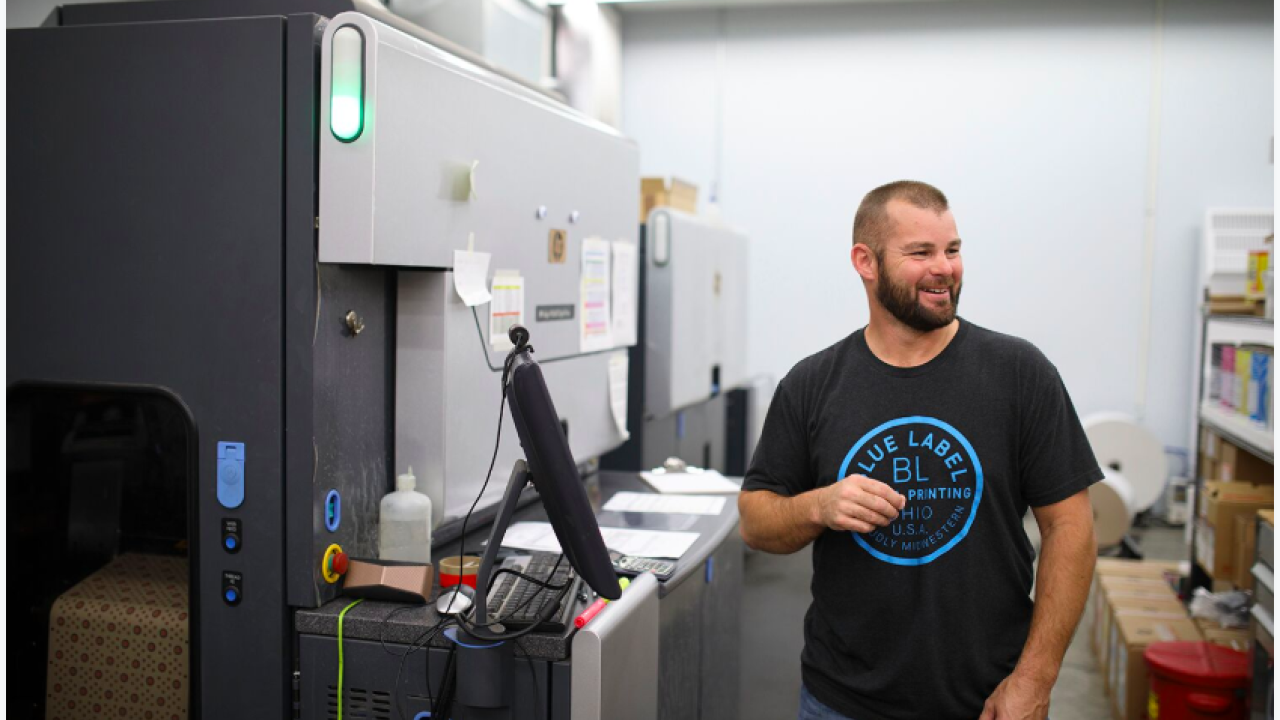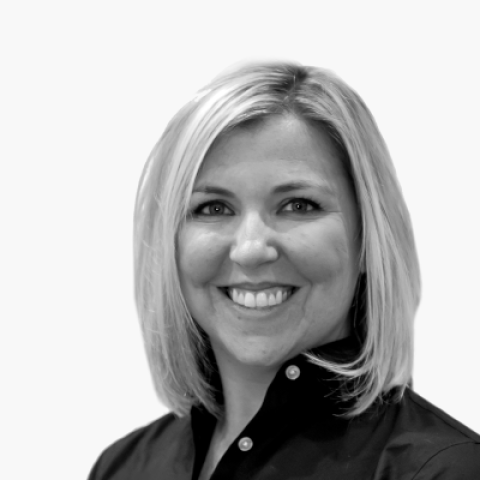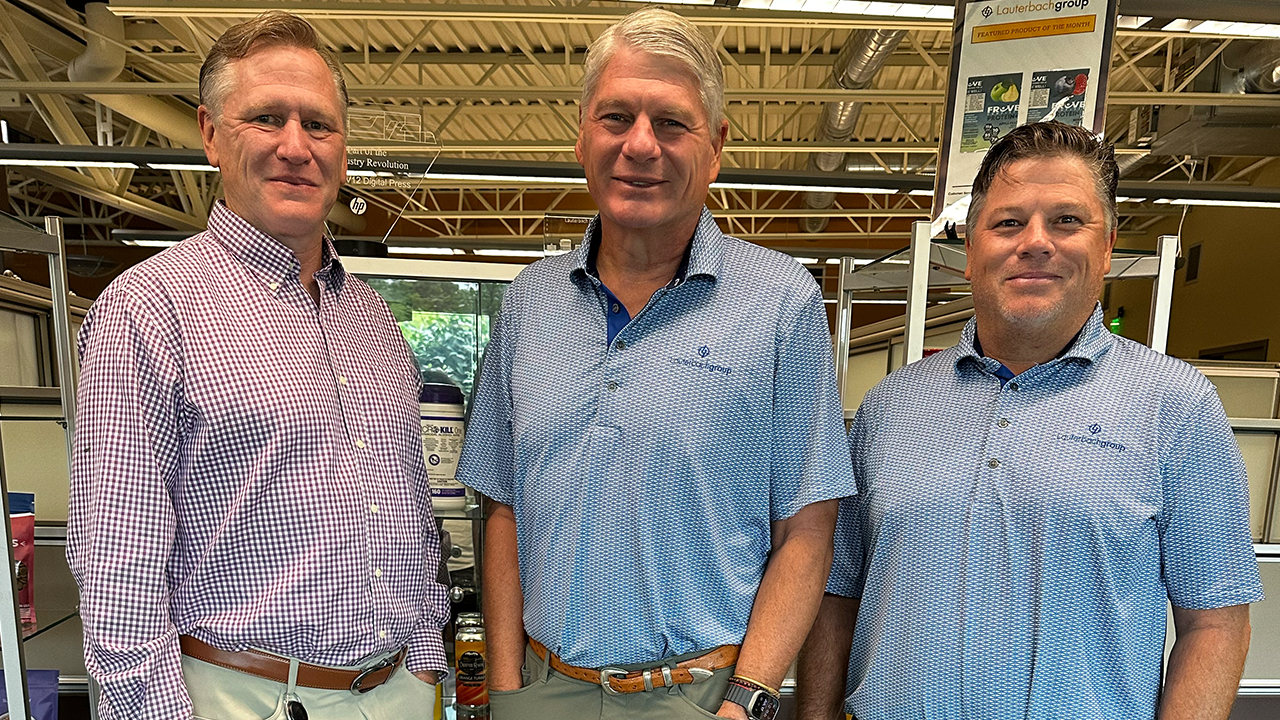Automation at work at Blue Label Digital Printing

The fourth-generation Ohio printer was launched in 1957, producing envelopes for church offerings, a business that still continues today as One Write Company and is ran by Boyd’s father, Norm Boyd.
As with many printing companies, One Write began looking to diversify and in 2003 started an offshoot of the envelope company, One Write Digital, which produced short-run digital label jobs for flexographic printers.
A realization came to the younger Boyd at a 2012 Dscoop event for HP Indigo digital press users, when a fellow printer from a much larger business asked Boyd how his company entered the label market. He looked around and thought, ‘Who, me?’ It didn’t occur to him that One Write Digital would be considered a label company.
It was with that epiphany that Boyd’s company realized it was not on the sidelines of the label sector, but it was actively playing in the game.
‘As I was talking to her I realized that we were already in a place that a lot of printers want to be. We just weren’t capitalizing on it like we should have been,’ Boyd recalls.
After that Dscoop, One Write Digital rebranded to Blue Label Digital Printing with Andrew at the helm as general manager.
The company added an HP Indigo WS6800 to its existing HP Indigo WS6600 digital printing unit, and at the same time invested in an ABG Digicon Series 2 with hot foil stamping and embossing.
At Labelexpo Europe 2017, Blue Label Digital invested in an HP Indigo 8000 digital press. In 2018, Blue Label Digital added AB Graphic’s Digicon Series 3 with a Fast Track module to keep up with the Indigo 8000’s print production.
All digital
Blue Label puts an emphasis on high-quality digital printing. In fact, no one on its 60-person staff has ever operated a flexographic press.
Craft beer and spirits make up the majority of Blue Label’s customers, as the company represents a large number of US craft breweries. ‘In the beginning we didn’t have a single beer customer,’ Boyd says. ‘We mocked up our own labels and we just shipped them out to breweries. Now we serve over 1,000 breweries all over the US.’
Wine, home goods, e-juice, specialty foods and personal care round out Blue Label’s primary markets, and the company has begun to play in the United States’ burgeoning legal cannabis market.
‘Whether the product is to be sold in a farmer’s market or for a large brand on the shelf. We scale to our customers’ needs,’ Boyd says.
At Labelexpo Europe 2017 in Brussels, Blue Label acquired an HP Indigo 8000 digital press that offers speeds of up to 262 linear feet a minute (80m/min) and doubled the company’s production capacity.
For a company that caters to craft, and focuses on digital production, Blue Label had to be prepared to be profitable with even the smallest jobs and the greatest number of SKUs, so the company turned to automating much of its production.
‘Like any digital printer, you have to have the infrastructure to handle all the SKUs if you’re going to sell yourself on the benefits of digital printing, you have to be able to accommodate volume,’ Boyd says. ‘That requires a printer to make the non-value added tasks as cost-efficient as possible.’
Automation and new technology
Blue Label Digital Printing opted to integrate Cerm MIS with Hybrid’s Cloudflow for an automated print production workflow.
The company decided to invest in a Cerm MIS because the flexibility of its database allowed Blue Label to select data the way they wanted to.
‘As a smaller company, Cerm made it easier to let MIS work for us. It was also scalable,’ Boyd says. ‘Cerm allowed us to grow faster, with the goal to link up with our Hybrid Cloudflow production workflow.’
All the investments have paid off and led to an impressive 65 percent growth rate this year.
As for what’s next for Blue Label, the company is exploring new opportunities, such as shrink sleeves, but it’s not merely trying to get bigger.
‘We want to expand our product offerings, but we want to look for things that we know we can do without sacrificing what people expect from us,’ Boyd says. ‘I would rather have a narrow focus and make customers really happy, than try to be everything to everybody.’
Stay up to date
Subscribe to the free Label News newsletter and receive the latest content every week. We'll never share your email address.


